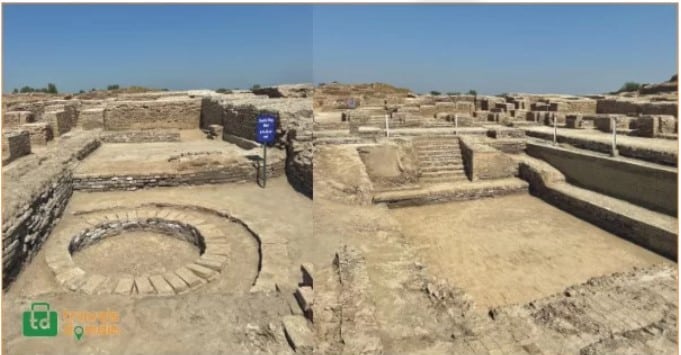https://travelsdomain.com/unveiling-the-mysteries-of-mohenjo-daro-pakistans-ancient-indus-valley-civilization/

Unveiling the Mysteries of Mohenjo-Daro: Pakistan’s Ancient Indus Valley Civilization
In the heart of Pakistan’s Sindh province lies a remarkable archaeological site that has captivated the imaginations of historians, archaeologists, and travelers for decades – Mohenjo-Daro.
This ancient city, which thrived over 4,000 years ago, is one of the crown jewels of the Indus Valley Civilization.
In this blog, we’ll embark on a journey through time to explore the enigmatic world of Mohenjo-Daro, shedding light on its history, architecture, urban planning, and the enduring mysteries that continue to puzzle experts.
The History and Mysteries of Mohenjo-Daro

Emergence of the Indus Valley Civilization: To understand Mohenjo-Daro, we must first grasp the context of the Indus Valley Civilization. Around 3300 BCE, this remarkable civilization began to flourish in what is now modern-day Pakistan and northwest India. Mohenjo-Daro, along with Harappa, is one of the principal cities of this ancient civilization.
Urban Planning and Architecture: Mohenjo-Daro’s urban layout was ahead of its time. The city was meticulously planned with well-organized streets, advanced drainage systems, and multi-story buildings. Delve into the architectural marvels of this Bronze Age metropolis.
Economy and Trade: The Indus Valley Civilization was known for its extensive trade networks. Mohenjo-Daro played a crucial role as a trading hub. Unearth the economic and trade activities that thrived within these ancient walls.
The Enigma of the Indus Script: One of the most tantalizing mysteries surrounding Mohenjo-Daro is the undeciphered Indus script. This ancient script has been discovered on seals and artifacts but remains a puzzle for linguists and historians. Explore the various theories and attempts to decipher this script, shedding light on what it might reveal about the civilization’s culture and language.
Everyday Life in Mohenjo-Daro

Mohenjo-Daro is not just an archaeological site; it’s a window into the lives and culture of the people who inhabited it. The artifacts, structures, and remains found at the site provide invaluable insights into the society and way of life of the Indus Valley Civilization:
Housing and Sanitation: Mohenjo-Daro’s citizens lived in well-designed homes with access to a sophisticated sanitation system. Discover how these ancient people maintained hygiene and comfort.
Art and Culture: The artifacts found at Mohenjo-Daro reveal a rich artistic and cultural heritage. Dive into the world of pottery, sculptures, jewelry, and more, and learn about society’s artistic expressions.
The artistry of Mohenjo-Daro’s residents is evident in the sculptures, pottery, and jewelry found at the site. The “Dancing Girl” figurine and the “Priest-King” statue are famous examples of their artistic prowess.
Religion and Rituals: Gain insights into the religious beliefs and rituals of the Indus Valley Civilization, including the worship of deities and the significance of various artifacts like the famous “Priest-King” statue.
Advanced Urban Planning: Mohenjo-Daro’s urban layout is a testament to the sophistication of its city planning. Its well-organized streets, drainage systems, and multi-story buildings point to a highly developed and organized society.
Trade and Economy: The presence of various artifacts, including seals and pottery, indicates the city’s active role in trade and commerce. The seals, often depicting intricate animal motifs, suggest a system of symbols and possibly a form of record-keeping.
Social Equality: The absence of grand palaces or evidence of extreme social stratification suggests a society characterized by a relatively high degree of social equality.
Writing and Script: The undeciphered Indus script found on seals and artifacts remains one of the most intriguing aspects of the civilization. The symbols and script may hold the key to unlocking additional insights into their culture and language.
